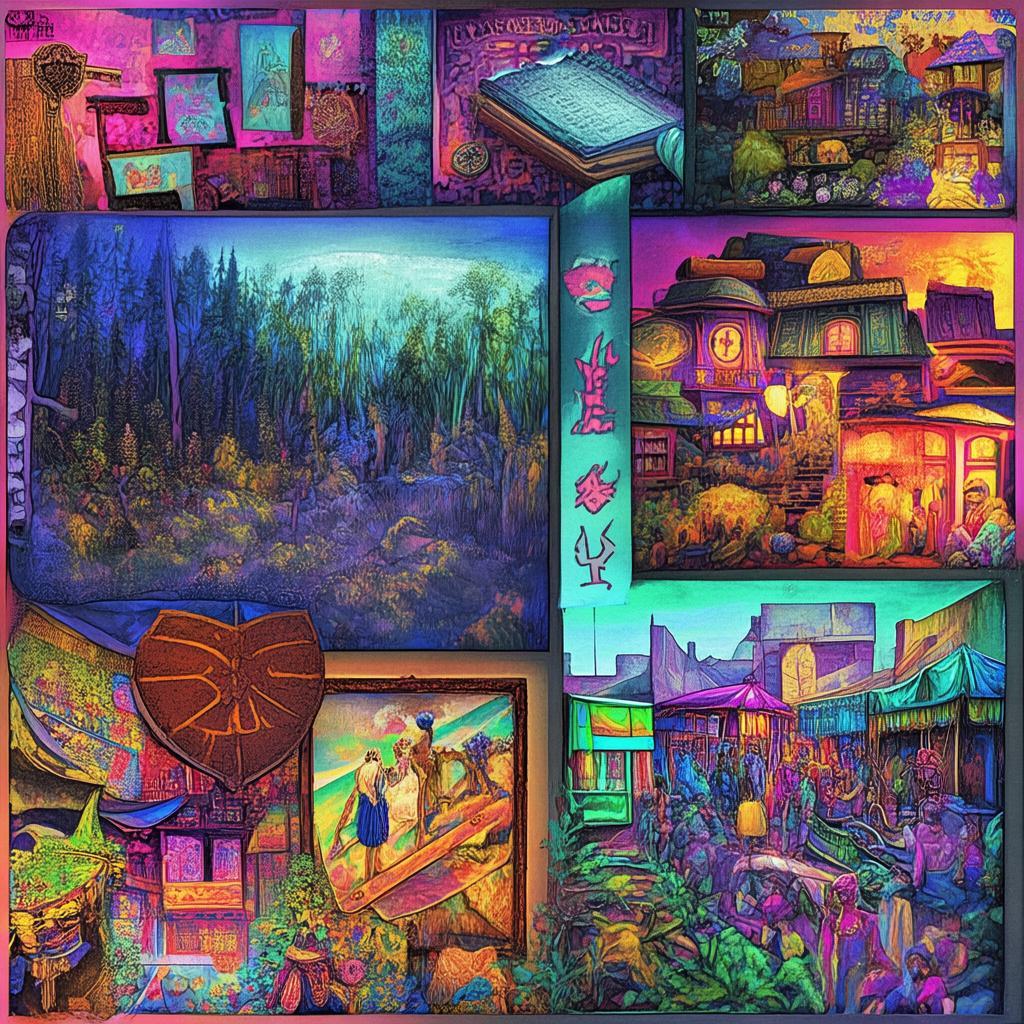The Labyrinth of Laughter: A Magician's Saddest Illusion
In the heart of the bustling city of Serendipia, there stood a theater known for its enchanting performances, where laughter echoed through the night. The Joyful Jester, as he was known to the world, was a magician whose illusions seemed to defy the very laws of nature. But beneath the laughter, there lay a tale of sorrow that few dared to uncover—the saddest illusion of his life.
The theater's grand opening night was a spectacle of wonder and delight. The air was thick with the scent of fresh popcorn and the hum of expectant whispers. The Jester stepped onto the stage, his face painted in a cheerful grin that never seemed to fade. He held a shiny silver wand, his eyes twinkling with the promise of a night of magic.
"Welcome, friends, to the world of illusions," he began, his voice smooth and soothing, "where dreams and reality dance together in harmony."
The first trick was a simple coin vanish, and the crowd roared with applause. The Jester deftly performed trick after trick, each more dazzling than the last. His assistant, a beautiful young woman with eyes as blue as the sea, danced across the stage, her movements as fluid as the magic itself.
But as the night wore on, the Jester's tricks grew more complex, and the laughter grew more subdued. His final trick, the one that would leave the audience breathless, was a mystery to all but himself. It was the Labyrinth of Laughter, an illusion that promised to reveal the deepest secrets of the heart.
The Jester took his place in the center of the stage, a small, ornate box placed before him. The audience leaned forward in anticipation. The lights dimmed, and a soft melody began to play. The Jester's hand reached into the box, and he drew out a small, ornate mirror.
"This mirror," he began, "has the power to show you your true self. Look deep into it, and you shall see the truth that has been hidden from you all these years."
As the mirror was passed around, the audience gasped and whispered among themselves. Each person looked into the mirror, hoping to find the reflection of their deepest desires or fears. But when the mirror returned to the Jester, something strange happened. His reflection was not of the joyful, carefree magician they had come to love, but of a man burdened by a heavy, invisible cloak.
The Jester's laughter, once the sound of the night, turned into a hollow, sorrowful chuckle. He looked at his reflection, and his eyes filled with tears. The audience, realizing the gravity of the situation, fell silent.
"The saddest illusion," the Jester whispered, "is the one we play on ourselves. We dress up our sorrows, hide them behind smiles, and believe that they do not exist."
The crowd erupted into applause, but it was not the raucous laughter they had come for. Instead, it was a somber, heartfelt appreciation for the truth the Jester had shared. The Labyrinth of Laughter had become more than a trick; it was a revelation.

The following days were tumultuous for the Jester. The newspapers ran articles about the magician who had uncovered his own sorrow. The audience came to see him not just for his magic but for the message he had shared. They whispered about the man behind the mask, the man who had dared to show his vulnerability.
The Jester found himself at the edge of a cliff, looking out over the city. He had reached the climax of his magic, the point where the illusion must break. But as he looked into the mirror, he saw not just his own reflection, but the faces of his audience, each one a story waiting to be told.
He took a deep breath and stepped back from the edge. He would continue to perform, to bring laughter and joy to the world, but he would also share his truth, the truth of the Labyrinth of Laughter.
The end of the story came with a twist. The Jester discovered that the mirror was no ordinary illusion. It was a gift from an old mentor, one who had seen the Jester's sorrow long before he had the courage to face it. The mirror was a tool, a way to reveal the truth that had been hidden within him.
And so, the Jester continued to perform, his acts of magic growing more profound and touching. The Labyrinth of Laughter became a symbol of hope, a reminder that the greatest magic lies in the courage to face our own truths, even when they are the saddest illusions of all.
The Labyrinth of Laughter: A Magician's Saddest Illusion was not just a story of magic and illusion, but a tale of self-discovery and the power of truth. It captured the essence of what it means to be human, to laugh and to cry, and to find joy in the most unexpected places.
✨ Original Statement ✨
All articles published on this website (including but not limited to text, images, videos, and other content) are original or authorized for reposting and are protected by relevant laws. Without the explicit written permission of this website, no individual or organization may copy, modify, repost, or use the content for commercial purposes.
If you need to quote or cooperate, please contact this site for authorization. We reserve the right to pursue legal responsibility for any unauthorized use.
Hereby declared.









